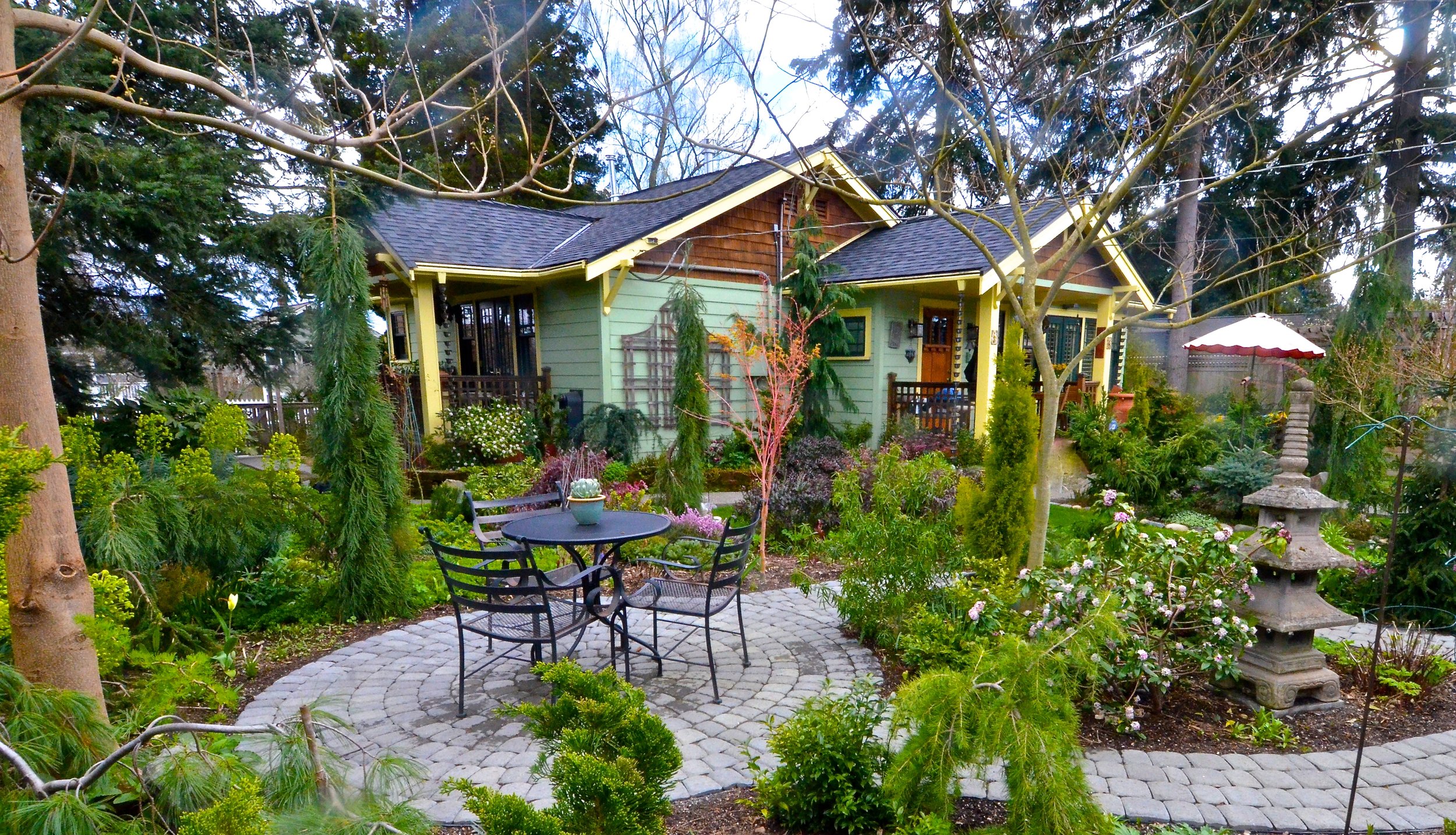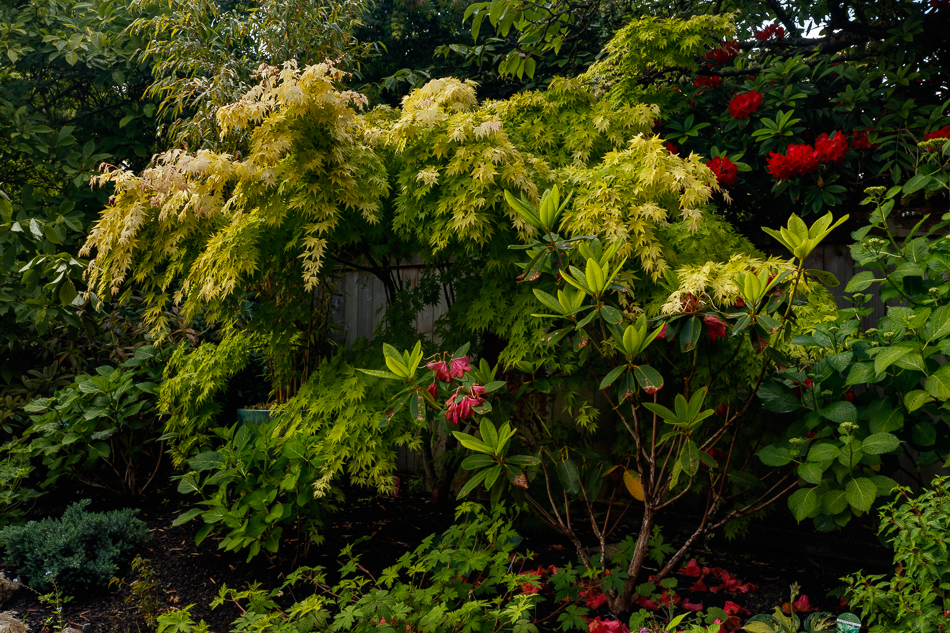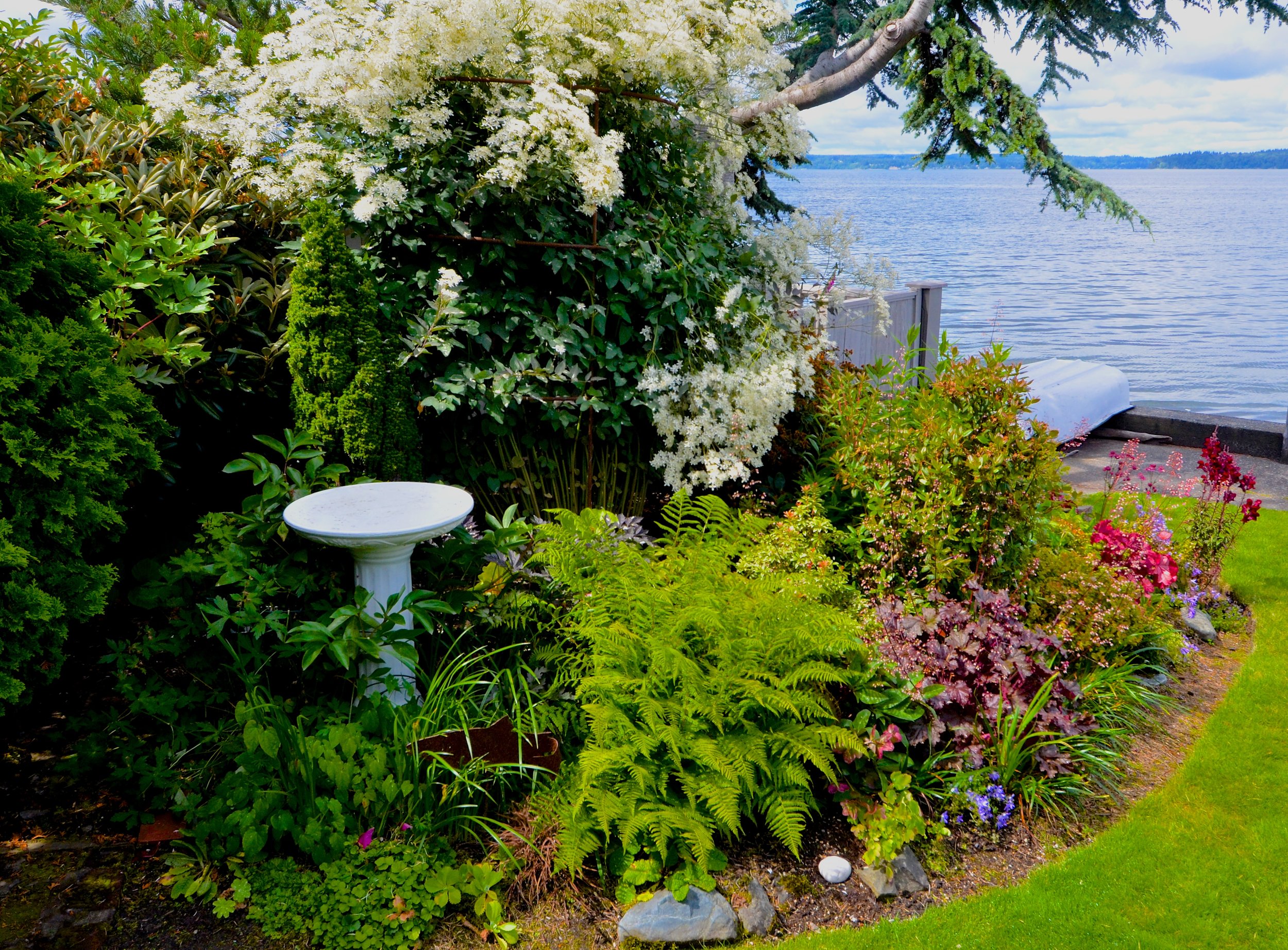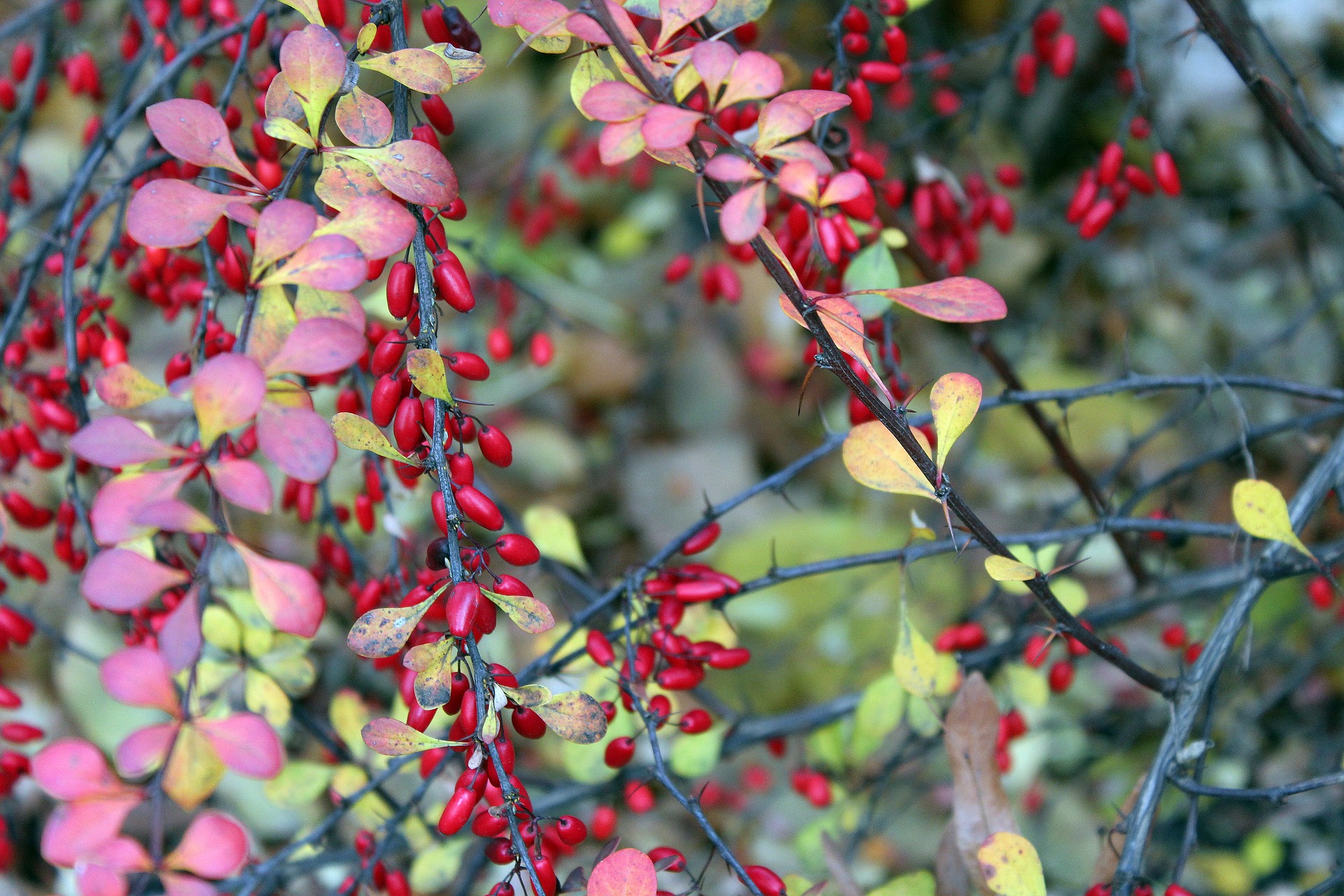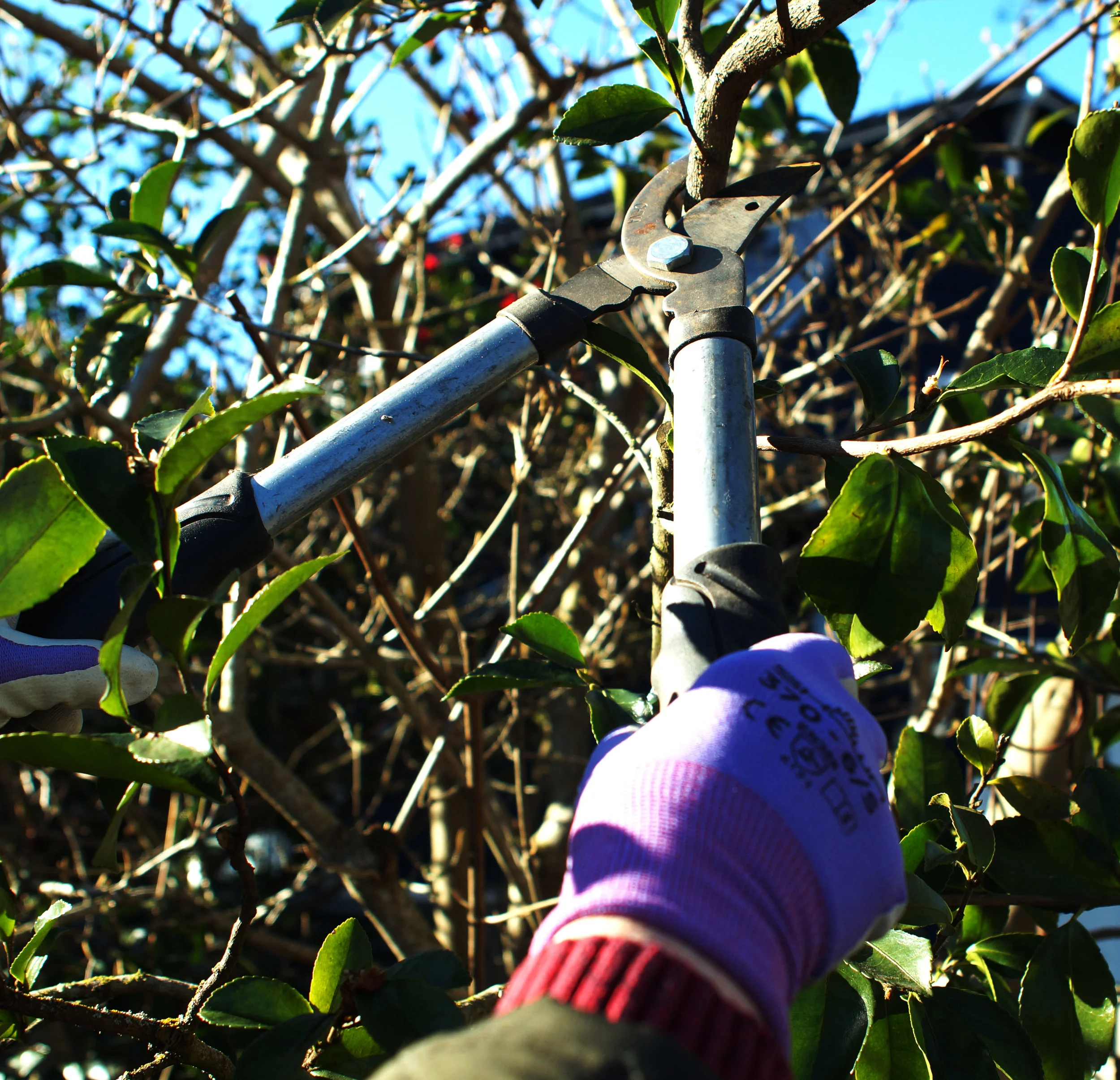Since 1995, the West Seattle Garden Tour has been inviting you to visit some of the most beautiful and unique gardens right in our own backyard. We do it for the love of lush, inviting spaces, but that's not the only reason. Our little all-volunteer organization donates the net proceeds, about $50,000 each year, to other nonprofits whose goals fit our mission—to promote horticulture, education and artistic endeavors within West Seattle and neighboring communities.
We celebrate our neighborhood. We make connections and foster relationships. We shine a light on local nonprofits working hard to make our community a better place. And above all, we are driven to provide them the funds they need to continue their important missions. For three decades, we have found joy in growing community. All of this is made possible by you—our ticket buyers, and the generosity of many sponsors and donors. From the bottom of our heart, thank you for supporting the West Seattle Garden Tour.
Last summer I got out my little floral shovel to attack the dandelions. Dig, stoop, try to grasp the weed's core, then pull or twist hard to yank out. Stand up and stretch; repeat. Once a driver stopped to say, "Get a Grampa Weeder—it's much easier."
Barberries make an excellent low hedge because of their uniform growth pattern, and a strong barrier planting. Quarter-inch thorns line the branches—a painful surprise to trespassers when planted under a window. They also provide protective cover for birds.
Doreen Koch Allen, this year's winner of the tour's annual art competition, sees parallels between gardener and artist, as both create something from nothing: an empty plot of soil for the gardener, a blank canvas for the artist.
Seattle experiences 8-10 weeks of little or no water each summer. Mark Pollock's South Seattle College Continuing Education class on June 3, “Water-Wise Gardening,” will focus on choosing drought tolerant plants and methods for conserving water.
Containers, raised beds and window boxes are often chosen for their easy maintenance reputation or for limited garden spaces. The real truth is that their usefulness comes with its own heavy issues sooner or later.
Upright rosemary shrubs are blooming freely now, their pale blue flowers reminiscent of the clear skies we have been missing here in the Pacific Northwest. Both ornamental and edible, Rosmarinus officinalis has a great many assets.
When winter has faded and the seed catalogs reviewed, I am itching to get the spring vegetable garden started. There is a little thrill in removing the remnants of the winter vegetable garden, then beginning again with new seed varieties and old favorites.
In our discussion of hand pruning tools, we've covered bypass pruners, anvil pruners and loppers. The last step on the scale of hand pruning tools is the pruning saw, which should be used for branches and limbs over 2” in diameter.
Heuchera is revered for its foliage, making a great groundcover or striking accent in the perennial border, or combined with other plants in a container garden. Colors include shades of green, chartreuse, pink, red, bronze, orange, chocolate, and purple.
Loppers come in both bypass and anvil blades. They come with short “mini” handle lengths, traditional mid-lengths, long handles and telescoping handles. And they can come with gears or ratchets, and in “heavy duty” size. How do you sort all this out?
So many little things draw me back to childhood and my most dear memories, like the taste of a tomato, picked from the vine on a warm summer day in my grandmother’s garden and eaten out of hand.
For year-round seasonal interest, Pieris japonica should be on every northwest gardeners must-have list. Also called Lily-of-the-Valley bush or Japanese Andromeda, Pieris is a broadleaf evergreen shrub that typically grows 9-12’ tall with a dense, upright habit.
Of the two types of hand pruners (bypass vs. anvil), the anvil pruner is the lesser-seen variety. It is designed to cut best on tough or dead wood, with a straight blade that makes a slicing or chopping cut against a flat anvil.
To continue with our winter fragrance theme, let’s talk about daphne odora, or winter daphne. Often placed near doorways and walks, the jasmine-like scent of this lovely shrub wafts from Pacific Northwest gardens from late January through March.
As a child, the only peas I wanted to eat were the ones growing in my grandmother’s garden—straight off the vines. Now, as an adult, I appreciate the work that she put into growing English peas; the per pound yield was a precious commodity.

